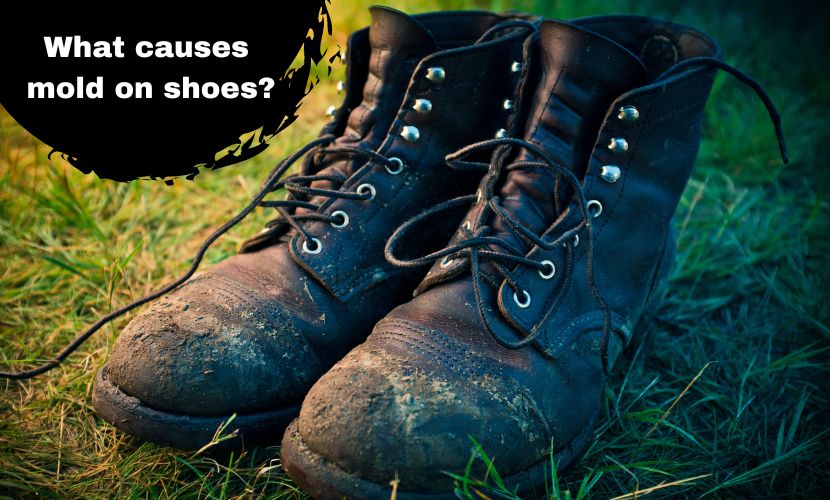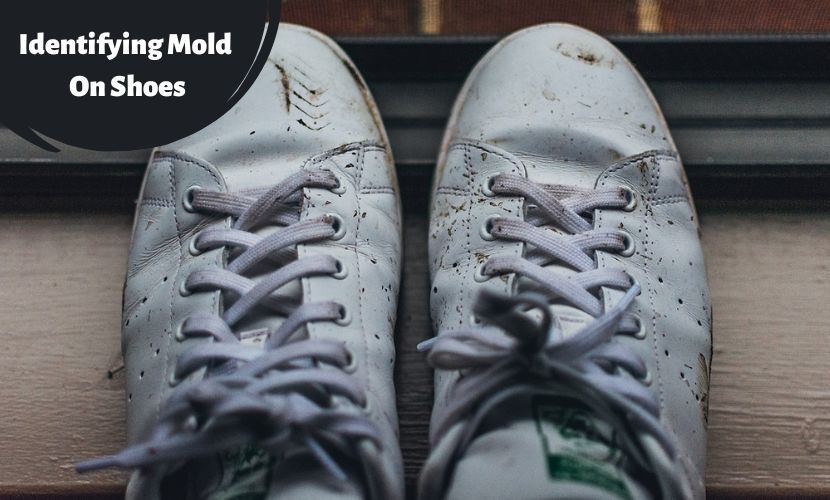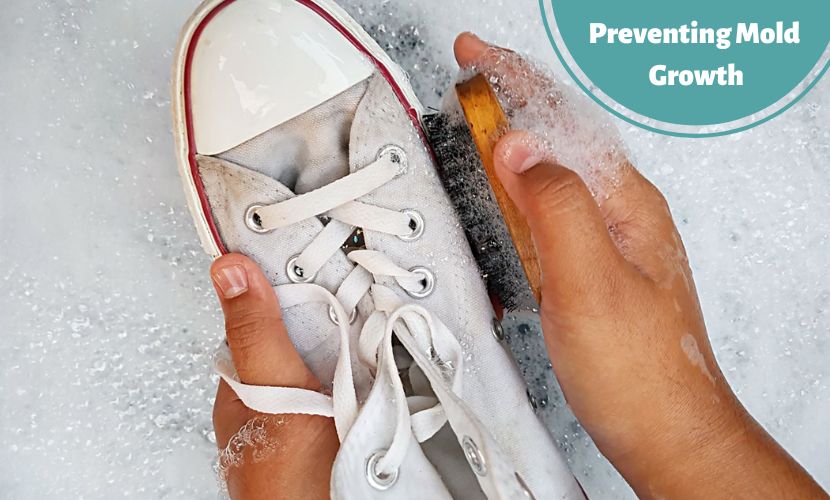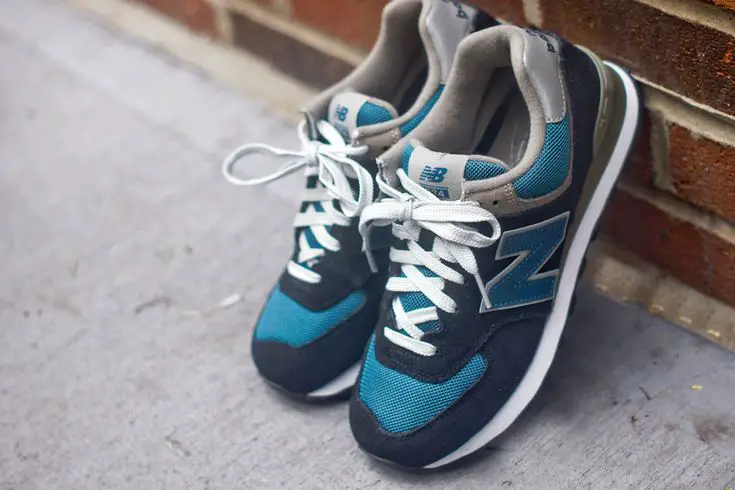Mold is a common issue that can occur on various surfaces, including shoes. It can be frustrating to discover mold growth on your favorite pair of shoes, as it not only affects their appearance but also poses potential health risks. Understanding the causes of mold on shoes is essential for preventing its occurrence and ensuring the longevity of your footwear.
Mold can develop on shoes due to excessive moisture, high humidity, poor ventilation, storing shoes in damp places, and inadequate maintenance. Moisture and damp conditions provide an ideal environment for mold spores to grow, while lack of airflow and ventilation traps moisture inside the shoes. Storing shoes in dark and damp places and neglecting regular cleaning and drying also contribute to mold formation.
Mold growth on shoes can be prevented by implementing simple preventative measures. Keeping shoes clean, dry, and properly ventilated can minimize the risk of mold formation. Storing shoes in a dry environment and using moisture-absorbing products can further help prevent mold growth. Regular maintenance and following these preventative steps will not only preserve the condition of your shoes but also ensure a mold-free and pleasant wearing experience.

Understanding Mold Growth
Mold is a fungus that blooms in warm, moist, and humid environments. It spreads by liberating spores into the air, which can then jump on surfaces and enlarge into new colonies. Mold growth can be an acute issue if left ungoverned, as it can lead to health problems and harm to property.
Factors Influencing Mold Growth
Many factors can affect the enhancement of mold on shoes. One of the most efficient factors is moisture. Shoes exhibited in water, including sweat or rain, are more likely to evolve mold. Humidity standards also play a significant role in mold extension, as great humidity can generate a respectful environment for mold bacteria to develop.
Another factor that can impact mold growth is the existence of organic elements. Shoes structured with organic components, such as leather or fabric, give a food origin for mold spores to evolve. Dirt and other debris that assemble on shoes can also offer a food source for mold.
Why Shoes Are Prone to Mold
Shoes are specifically prone to mold broadening because they are often revealed to moisture and animate elements. Sweat and rain can generate a moist environment inside shoes, offering mold growth. Shoes not accurately wiped or dried before storage can also provide a beneficial environment for mold germs to flourish.
Additionally, shoes placed in dark, damp areas, such as a wardrobe or basement, are more likely to evolve mold. Deficiencies in breathing and air circulation can make an immobile environment that develops mold growth.
To avert mold growth on shoes, it is necessary to maintain them clean and dry. Shoes should be thoroughly dried before being placed in a closet and deposited in a new, dry, well-circulated area. Routine cleaning and preservation can also support removing the buildup of dirt and residue that can give a food origin for mold spores.
Identifying Mold on Shoes

Mold on shoes is a common issue that several people face. It is necessary to recognize mold extensions on shoes as soon as feasible to prevent them from extending and bringing further damage. The following are several ways to pinpoint mold development on shoes:
- Visible Spots: Mold widening on shoes often seems as detectable spots on the shoe’s exterior. These marks can be black, green, white, or brown, based on the kind of mold.
- Unpleasant Odor: Mold thickening on shoes can also lead to a displeasing odor. If your boots contain a decayed smell, it could indicate mold growth.
- Texture: Mold broadening on shoes can also swap the shoe’s appearance. The facet may become downy or greasy to the touch.
- Allergic Reactions: Mold extension on shoes can lead to hypersensitivity reactions such as sneezing, coughing, and tingling eyes. If you encounter any of these signs when wearing your boots, it could indicate mold enhancement.
If you doubt that your shoes contain mold growth, it is necessary to take action instantly to avert it from growing. The below part will offer tips on preventing mold widening on shoes.
Health Risks Associated with Mold on Shoes
Mold growth on shoes can cause several health issues. Mold spores can lead to nasal obstruction, coughing, wheezing, runny eyes, skin discomfort, and problems in breathing. In people with asthma or other respiratory states, mold can activate asthma attacks. Mold is also connected to more acute conditions like cancer and immune system disorders.
When mold enhances shoes, it can also liberate mycotoxins, toxic elements that can lead to health issues. Subjection to mycotoxins can cause symptoms like headaches, lightheadedness, fatigue, and nausea. In several cases, mycotoxins can also bring about more significant health problems, such as liver destruction and neurological damage.
It’s necessary to mention that not all kinds of mold are poisonous, and not all people are pretty delicate to mold. However, it’s always perfect for making mistakes on the side of caution and taking action to avert mold extension on shoes.
The following are several tips to aid in fending off mold growth on shoes:
- Maintain shoes dry and well-circulated.
- Avoid storing shoes in moist areas like basements or wardrobes without appropriate ventilation.
- Utilize a dehumidifier to minimize moisture standards in the air.
- Clean shoes routinely and entirely to avert dirt and sweat growth.
- Keep a shoe disinfectant spray to destroy bacteria and fungi on shoes.
- Place shoes in permeable bags or vessels to prevent dampness construction.
- Spin shoes to permit them to circulate out and dry thoroughly between uses.
- Restore shoes that are critically moldy or have been revealed to water damage.
Preventing Mold Growth

Mold enhancement on shoes can be averted by utilizing several simple actions. Appropriate storage, routine cleaning, and utilization of antifungal sprays can aid in preventing mold from constructing on shoes. Proper ventilation, utilization of silica gel packets, and keeping away from moist environments are also necessary to avoid mold formation. Daily revolving of shoes and applying shoe trees can also support in averting mold from growing.
Proper Storage of Shoes
Proper placement of shoes is obligatory in preventing mold enhancement. Shoes should be kept in an excellent, fresh, dry place with adequate air ventilation. Avoid storing shoes in moist areas, like basements or wardrobes, with lousy ventilation. Shoes should be kept away from direct sunlight and heat origins, as these can lead the boots to dry out and split.
Regular Cleaning and Maintenance
Regular cleaning and preservation of shoes are necessary to avert mold formation. Shoes should be wiped routinely with a mushy brush or fabric to detach dirt and residue. After cleaning, shoes should be permitted to air dry wholly before being set aside. Leather shoes should be handled using a leather conditioner to prevent rupturing and drying.
Use of Antifungal Sprays
Antifungal sprays can be utilized to keep away mold formation on shoes. These sprays should be put on the boots before keeping them in a closet and permitted to dry entirely. Antifungal sprays can be bought at many shoe stores or online.
Proper Ventilation
Appropriate ventilation is necessary to prevent mold extension on shoes. Shoes should be placed in a section with good air ventilation. Shoes should not be kept in plastic carriers or containers, which can confine moisture and encourage mold growth. Despite this, shoes should be stored in porous vessels or shoe bags.
Use of Silica Gel Packets
Silica gel packets can soak up moisture and avert mold development on shoes. These packets should be stored in the shoes before keeping them aside. Silica gel packets can be bought online or at several shoe stores.
Avoiding Damp Environments
Avoiding moist environments is obligatory in preventing mold enhancement on shoes. Shoes should not be used in damp or damp states. Soaked shoes should be dried entirely before being placed. Shoes with lousy air circulation should not be kept in wet areas, including basements or closets.
Regular Rotation of Shoes
Routine rotation of shoes is necessary to prevent mold enhancement. Shoes should be rotated frequently to permit every pair to air out and dry thoroughly. This will avert moisture from construction up into the boots and encourage perfect airflow.
Use of Shoe Trees
The utilization of shoe trees is efficient in averting mold development on shoes. Shoe trees aid in adjusting the appearance of the boots and nurture ideal air circulation. Shoe trees should be put inside the shoes before keeping them aside.
Are there any natural ways to prevent mold from growing on shoes?
There are a few natural ways to avert mold from developing on shoes. The following are several ways:
- Use Tea Tree Oil: Tea tree oil is an instinctive antifungal and antibacterial medium that can aid in warding off mold enhancement. Simply build several drops of tea tree oil into a spray vessel charged with water and spray them into your shoes. Permit them to air dry before wearing them again.
- Use Vinegar: Vinegar is one more common antifungal factor that can support averting mold formation. Mix justified parts of white vinegar and water into a spray flask and spray the interior of your shoes. Permit them dry naturally before using them again.
- Use Baking Soda: Baking soda is a legitimate deodorizer and can aid in soaking up dampness from your shoes, creating them firmer for mold to extend. Simply shower some baking soda into your shoes and set it aside overnight. Take out the extra baking soda before using them again.
- Use Charcoal: Charcoal is a natural deodorizer and can support soaking up wetness from your shoes. Store several chunks of initiated charcoal into your boots and authorize them to sit overnight. Detach the charcoal before using them again.
- Keep shoes dry: The perfect way to avert mold enhancement is to maintain your boots dry. Verify to allow them to air dry wholly before storing them.
- Use shoe trees: Shoe trees can aid in adjusting your shoes’ appearance and help soak up dampness. They are beneficial for leather shoes.
- Store shoes properly: Keep your shoes in an excellent, fresh, dry place with perfect air ventilation. Avert keeping them in wet areas such as basements or wardrobes.
- Rotate shoes: Revolving your shoes can aid in warding off mold formation by permitting them to dry out entirely in between wears.
By ensuring these standard methods, you can avert mold extension on your shoes and maintain them appearing and smelling crisp and fresh.
What are some common causes of mold growth on shoes?
Mold on shoes is a natural issue that several people face. It can be brought about by different factors, comprising:
- Moisture: Shoes that are moist or wet will probably evolve mold. This can come off when shoes are not appropriately dried after getting damp or placed in a wet area.
- Humidity: Great humidity standards can also add to mold extension on shoes. This is particularly true in areas with lousy circulation, like closets or retention rooms.
- Lack of air circulation: Shoes kept in airtight vessels or narrow spaces can also spread mold because of the deficiency of air circulation.
- Dirty shoes: Shoes not wiped routinely can also offer a breeding surface for mold. Dirt and residue can catch dampness and create an ideal mold-broadening environment.
- Leather shoes: Leather shoes are specifically open to mold magnification, particularly if not accurately cared for. Leather is a natural element that can trap moisture, which can cause mold enhancement.
- Suede shoes are also sensitive to mold thickening, especially if not shielded from dampness and dirt.
- Synthetic materials: Shoes structured from fabricated materials can also give rise to mold, particularly if they are not perfectly cared for.
- Fungal spores: Mold spores are found in the air and can comfortably attach to shoes. If the states are perfect, these spores can rapidly evolve into mold.
To avert mold growth on shoes, it is efficient to maintain them clean and dry. Shoes should be placed in a well-circulated area and permitted to dry wholly before wearing or storing them. Utilizing a shoe dehumidifier or positioning silica gel packets into shoes can also aid in soaking up moisture and avert mold formation.
How Do I Prevent Mold from Growing Inside My Shoes?
Mold on shoes is a natural issue that can be averted by taking several basic steps. The following are a few ways to keep away mold from growing into your shoes:
- Keep your shoes dry: Moisture is the chief cause of mold formation, so it is necessary to maintain your boots dry. After using your shoes, allow them to air out in a well-circulated area. Refrain from placing your shoes in wet or humid places.
- Use shoe trees: Shoe trees support to adjust the appearance of your shoes and soak up dampness. They are accommodating for leather shoes that are liable to mold enhancement.
- Clean your shoes regularly: Routine cleaning is critical in preventing mold formation. Utilize soap and water to wipe your boots and separate any dirt or sweat that could offer food for mold bacterium. For leather shoes, utilize rubbing alcohol despite the water.
- Use anti-fungal sprays: Anti-fungal sprays can be applied to avert mold enhancement in your shoes. Shower the interior of your boots using an anti-fungal spray before placing them.
- Store your shoes in a dry place: Place your shoes in a dry, well-circulated area. Avoid storing your shoes in plastic containers or boxes, as they can catch dampness and encourage mold growth.
- Rotate your shoes: Using similar shoes daily can cause moisture construction and mold enhancement. Revolve your boots so they have enough time to dry out during wear.
- Use moisture-absorbing products: Moisture-soaking articles such as silica gel packages or operated charcoal can be stored in your shoes to mop up extra moisture and avert mold extension.
- Keep your feet dry: Dampness from your feet can add to mold broadening. Certify your feet are dry before placing them on your shoes. Utilize foot powder or antiperspirant to minimize sweating.
By succeeding in these uncomplicated steps, you can keep mold from growing into your shoes and lengthen the life of your footwear.
Conclusion
Mold on shoes is a common issue that can be averted with several easy steps. By comprehending the reasons for mold formation and taking preventive measures to avoid it, you can maintain your shoes appearing and smelling neat and clean.
Routine cleaning, drying, and storage in a well-circulated area are necessary to avert mold enhancement on shoes. Utilizing a shoe dehumidifier or silica gel cartons can also aid in soaking up extra dampness and stopping mold from growing.
It’s necessary to mention that not all kinds of shoes are generated equally regarding mold prevention. Leather and suede shoes, for instance, need particular care to avert mold growth. Verify to follow the maker’s directions for maintenance and adjustment to certify the durability of your shoes.
In addition to averting mold enhancement, punctually inscribing any existing mold on shoes is necessary. Not noticing mold formation can cause health problems and further damage your boots. Many practical techniques for detaching mold from shoes include utilizing vinegar, baking soda, or commercial mold disposal.
By taking preventive measures to avert mold enhancement on shoes and addressing any surviving mold regularly, you can maintain your shoes appearing and smelling crisp and fresh for years to come.
Related Articles:




